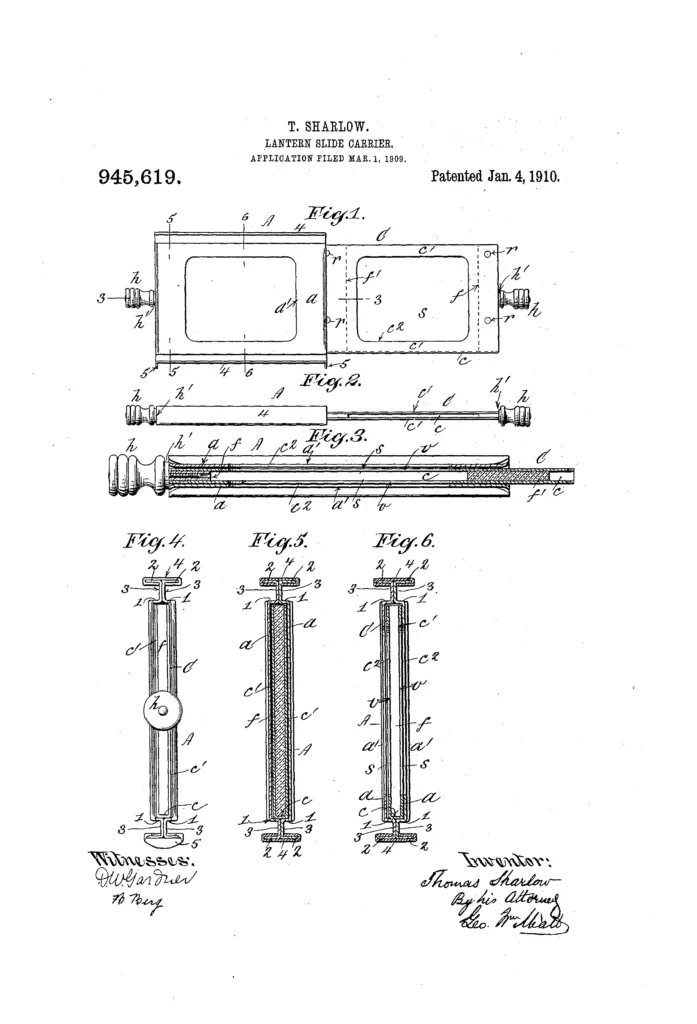
Developed in the 17th century, the lantern projector was oftentimes used for entertainment or educational purposes. Also known as a magic lantern, the apparatus consisted of pictures or paintings on transparent plates, a light source, and a single lens to focus the image on a screen. Magic lanterns were popular until the mid-1900s when they were superseded by slide projectors.
At the time of this patent, the most common light source would be an oil lamp. On January 4, 1910, Thomas Sharlow was issued a patent by the United States Patent Office (Patent 945,619) for a lantern slide carrier. Prior to this time, slide carriers were made of combustible materials. This invention fabricated the slide holder out of sheet metal folded over itself to provide rigidity along with the use of non-combustible fibrous material to prevent light from escaping above or below the carrier.
The primary advantage of the carrier was as follows:
“… the metal being comparatively thin and affording a relatively large area of surface to the atmosphere in proportion to its cross section, diffuses heat rapidly and does not overheat. I thus avoid the use of inflammable material, and attain strength and rigidity combined with lightness of structure.”
The patent included not just the slide carrier, but also the process by which the carrier would be manufactured. You can see and read more about Thomas’ invention here: Thomas Sharlow Lantern Slide Carrier.
